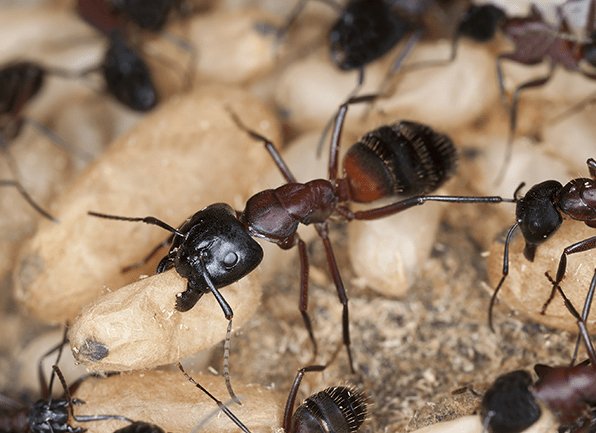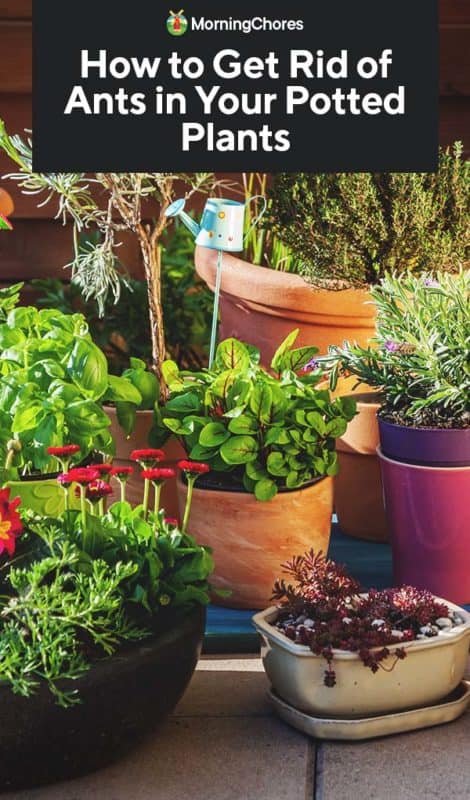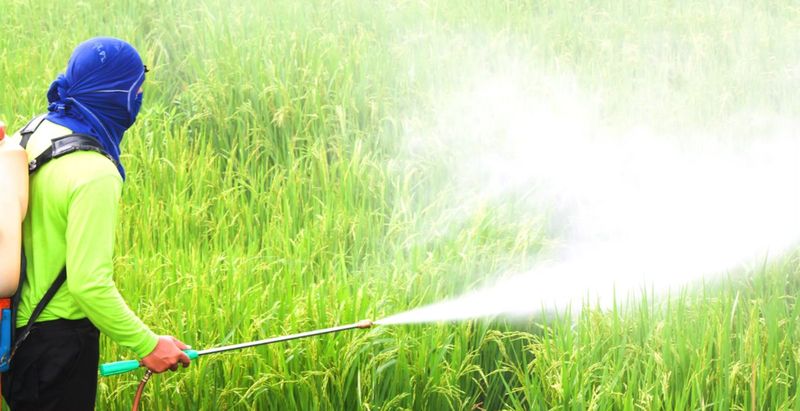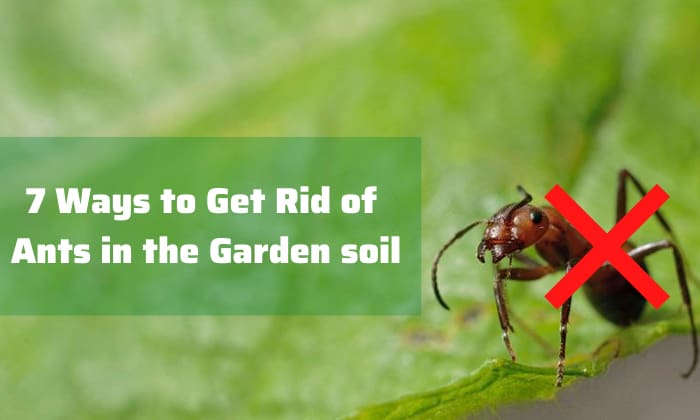Why Ants Infest Flower Beds and the Risks They Pose
Ants are attracted to flower beds for a variety of reasons, including the presence of sweet substances like nectar, honeydew, and plant sap. These tiny creatures are also drawn to the moist and nutrient-rich soil found in flower beds, which provides them with an ideal environment to thrive. Additionally, ants are often found in flower beds due to the presence of aphids, whiteflies, and other pests that secrete honeydew, a sweet, sticky substance that ants find irresistible.
The risks posed by ants in flower beds are significant. Ants can damage plants by feeding on their sap, leaves, and flowers, leading to stunted growth, yellowing of leaves, and reduced flowering. Ants can also introduce diseases and pests to plants, further exacerbating the problem. Moreover, ants can alter the soil structure, making it difficult for plants to absorb water and nutrients, ultimately affecting their overall health.
It is essential to take action to eliminate ants from flower beds to prevent these risks and maintain a healthy and thriving garden. By understanding why ants infest flower beds and the risks they pose, gardeners can take proactive steps to prevent infestations and protect their plants. Learning how to get rid of ants in flower beds is crucial to preserving the beauty and health of these outdoor spaces.
Identifying the Source: Common Ant Species Found in Flower Beds
When it comes to getting rid of ants in flower beds, it’s essential to identify the species of ant you’re dealing with. This knowledge will help you develop an effective strategy for eliminating them. Some of the most common ant species found in flower beds include odorous house ants, pavement ants, and little black ants.
Odorous house ants are small, dark brown ants that emit a rotten coconut-like smell when crushed. They are attracted to sweet substances and can be found in large numbers near aphid colonies. Pavement ants, on the other hand, are larger and darker, with a habit of excavating soil and creating mounds. Little black ants are small, dark-colored ants that are often found in large colonies and are attracted to sweet and greasy substances.
To identify the ant species in your flower bed, look for characteristics such as body color, size, and shape. Observe their behavior, including the trails they follow and the food sources they’re attracted to. You can also try to crush an ant to identify its species by the smell it emits. By understanding the habits and characteristics of the ant species in your flower bed, you can develop a targeted approach to getting rid of them and preventing future infestations.
How to Get Rid of Ants in Flower Beds Naturally
When it comes to getting rid of ants in flower beds, many gardeners prefer to use natural methods that are safe for the environment and human health. Fortunately, there are several effective natural methods to eliminate ants from flower beds without resorting to chemical insecticides.
One of the most effective natural methods is to use diatomaceous earth, a powder made from the fossilized remains of tiny aquatic organisms. This powder works by dehydrating the ants, causing them to die. Simply sprinkle the powder around the affected areas and water it in to ensure it reaches the ants.
Cinnamon is another natural deterrent that can be used to get rid of ants in flower beds. Ants detest the smell of cinnamon and will avoid areas where it is present. Sprinkle cinnamon powder around the affected areas to keep ants away.
Other natural methods for eliminating ants from flower beds include using essential oils such as peppermint, tea tree, and lavender. These oils can be mixed with water and sprayed around the affected areas to repel ants. Additionally, using natural barriers such as copper tape or cinnamon sticks around the perimeter of the flower bed can also help to deter ants.
Another effective natural method is to use beneficial nematodes, microscopic worms that attack and kill ants. These nematodes can be applied to the soil and will seek out and destroy ant colonies.
By using these natural methods, gardeners can effectively get rid of ants in flower beds without harming the environment or human health. Remember, when learning how to get rid of ants in flower beds, it’s essential to be patient and persistent, as natural methods may take some time to produce results.
Chemical Control Methods: When to Use Insecticides and How to Apply Them Safely
While natural methods are often preferred, there may be situations where chemical control methods are necessary to get rid of ants in flower beds. Insecticides can be effective in eliminating ant colonies, but they should be used with caution and as a last resort.
When choosing an insecticide, it’s essential to select a product that is specifically labeled for ant control and is safe for use around flowers and other plants. Always read and follow the label instructions, and take necessary precautions to avoid exposure to the insecticide.
There are several types of insecticides available, including baits, sprays, and granules. Baits are often the most effective, as they allow the ants to return to their colony and share the insecticide with other ants, ultimately killing the queen and eliminating the colony.
When applying insecticides, it’s crucial to follow safety precautions to minimize environmental impact and human exposure. Wear protective clothing, including gloves and eye protection, and avoid applying insecticides on windy or rainy days. Additionally, avoid applying insecticides near water sources or in areas where pets or wildlife may be present.
It’s also important to note that insecticides may not provide a long-term solution to ant infestations, as new colonies can quickly establish themselves. Therefore, it’s essential to combine chemical control methods with natural methods and preventative measures to achieve optimal results.
By understanding how to use insecticides safely and effectively, gardeners can use them as a last resort to get rid of ants in flower beds. However, it’s always recommended to explore natural methods first, as they are often safer and more environmentally friendly.
Sealing the Deal: Preventing Future Ant Infestations in Flower Beds
Once ants have been eliminated from flower beds, it’s essential to take steps to prevent them from returning. Preventing future ant infestations requires a combination of good garden hygiene, sealing entry points, and removing food sources.
One of the most effective ways to prevent ants from returning to flower beds is to seal all entry points. Ants can enter flower beds through even the tiniest cracks and crevices, so it’s essential to thoroughly inspect the area and seal any openings. Use caulk or silicone sealant to fill in gaps around plants, stones, and other objects.
Removing food sources is also crucial in preventing future ant infestations. Ants are attracted to sweet or sticky substances, so remove any debris, dead plants, or weeds that may be providing a food source. Keep the flower bed clean and tidy, and avoid overwatering, which can attract ants.
Maintaining good garden hygiene is also vital in preventing ant infestations. Regularly inspect the flower bed for signs of ants, and take action immediately if ants are detected. Keep the surrounding area free of debris and weeds, and avoid using mulch or compost that may attract ants.
Additionally, consider using physical barriers to prevent ants from entering the flower bed. Copper tape, for example, can be used to deter ants, as they don’t like the taste of copper. Place the tape around the perimeter of the flower bed to create a barrier that ants won’t cross.
By taking these steps, gardeners can prevent ants from returning to flower beds and ensure that their blooms remain ant-free. Remember, prevention is key when it comes to getting rid of ants in flower beds, so stay vigilant and take action quickly if ants are detected.
Combining Methods for Maximum Effectiveness
When it comes to getting rid of ants in flower beds, using a combination of natural and chemical control methods can be the most effective approach. By combining different methods, gardeners can create a comprehensive treatment plan that targets ants from multiple angles.
One effective combination is to use natural deterrents, such as diatomaceous earth or cinnamon, in conjunction with chemical insecticides. This approach can provide a quick knockdown of the ant population while also providing long-term protection against future infestations.
Another approach is to use natural methods to repel ants and prevent them from entering the flower bed, while using chemical insecticides to target the ant colony directly. This can be especially effective when combined with sealing entry points and removing food sources.
When combining methods, it’s essential to create a treatment schedule to ensure that the different methods are used in a coordinated and effective manner. This may involve applying natural deterrents on a regular basis, while using chemical insecticides as needed to target specific ant colonies.
Monitoring progress is also crucial when combining methods. Regularly inspect the flower bed for signs of ants, and adjust the treatment plan as needed. This may involve increasing or decreasing the frequency of natural deterrent applications, or switching to a different chemical insecticide if the current one is not effective.
By combining natural and chemical control methods, gardeners can create a comprehensive treatment plan that provides maximum effectiveness in getting rid of ants in flower beds. Remember to always follow safety precautions when using chemical insecticides, and to use natural methods in conjunction with chemical methods to minimize environmental impact.
Common Mistakes to Avoid When Dealing with Ants in Flower Beds
When trying to get rid of ants in flower beds, it’s essential to avoid common mistakes that can hinder the effectiveness of control methods. By being aware of these mistakes, gardeners can take a more informed approach to eliminating ants and maintaining an ant-free flower bed.
One common mistake is using the wrong products or methods. For example, using a broad-spectrum insecticide can harm beneficial insects and contaminate soil and water. Instead, gardeners should opt for targeted control methods that specifically target ants, such as bait stations or natural deterrents.
Another mistake is ignoring the root cause of the ant infestation. Ants are attracted to sweet or sticky substances, so failing to remove food sources or debris can lead to repeated infestations. Gardeners should take steps to identify and eliminate the source of the infestation, rather than just treating the symptoms.
Not being persistent is also a common mistake. Getting rid of ants in flower beds requires ongoing effort and attention. Gardeners should be prepared to repeat control methods as needed, and to adjust their approach if the initial method is not effective.
Additionally, gardeners should avoid using chemical insecticides as a first resort. While these products can provide quick results, they can also have negative environmental impacts and harm beneficial insects. Instead, gardeners should opt for natural control methods, such as using diatomaceous earth or cinnamon, and reserve chemical insecticides for severe infestations.
By avoiding these common mistakes, gardeners can increase their chances of successfully getting rid of ants in flower beds and maintaining a healthy, thriving garden. Remember to stay vigilant, persistent, and informed to keep ants at bay and enjoy a beautiful, ant-free flower bed.
Long-Term Maintenance: Keeping Your Flower Beds Ant-Free for Good
Maintaining an ant-free flower bed requires ongoing effort and attention. By following a few simple steps, gardeners can ensure that their flower beds remain ant-free for good.
Regular monitoring is essential for detecting ant activity early. Gardeners should regularly inspect their flower beds for signs of ants, such as trails, mounds, or actual ants. This will enable them to take prompt action to eliminate the ants before they establish a large colony.
Adjusting control methods as needed is also crucial. Gardeners may need to switch to a different natural deterrent or insecticide if the initial method is not effective. They should also be prepared to repeat control methods as needed to ensure that the ants do not return.
Staying vigilant is key to maintaining an ant-free flower bed. Gardeners should remain aware of their surroundings and take steps to prevent ants from entering their flower beds. This includes sealing entry points, removing food sources, and maintaining good garden hygiene.
In addition, gardeners should consider implementing preventative measures to prevent ants from infesting their flower beds in the first place. This can include using physical barriers, such as copper tape or diatomaceous earth, to deter ants from entering the flower bed.
By following these steps, gardeners can enjoy a beautiful, ant-free flower bed for years to come. Remember, getting rid of ants in flower beds is an ongoing process that requires regular effort and attention. With persistence and the right strategies, gardeners can keep their flower beds ant-free and thriving.








